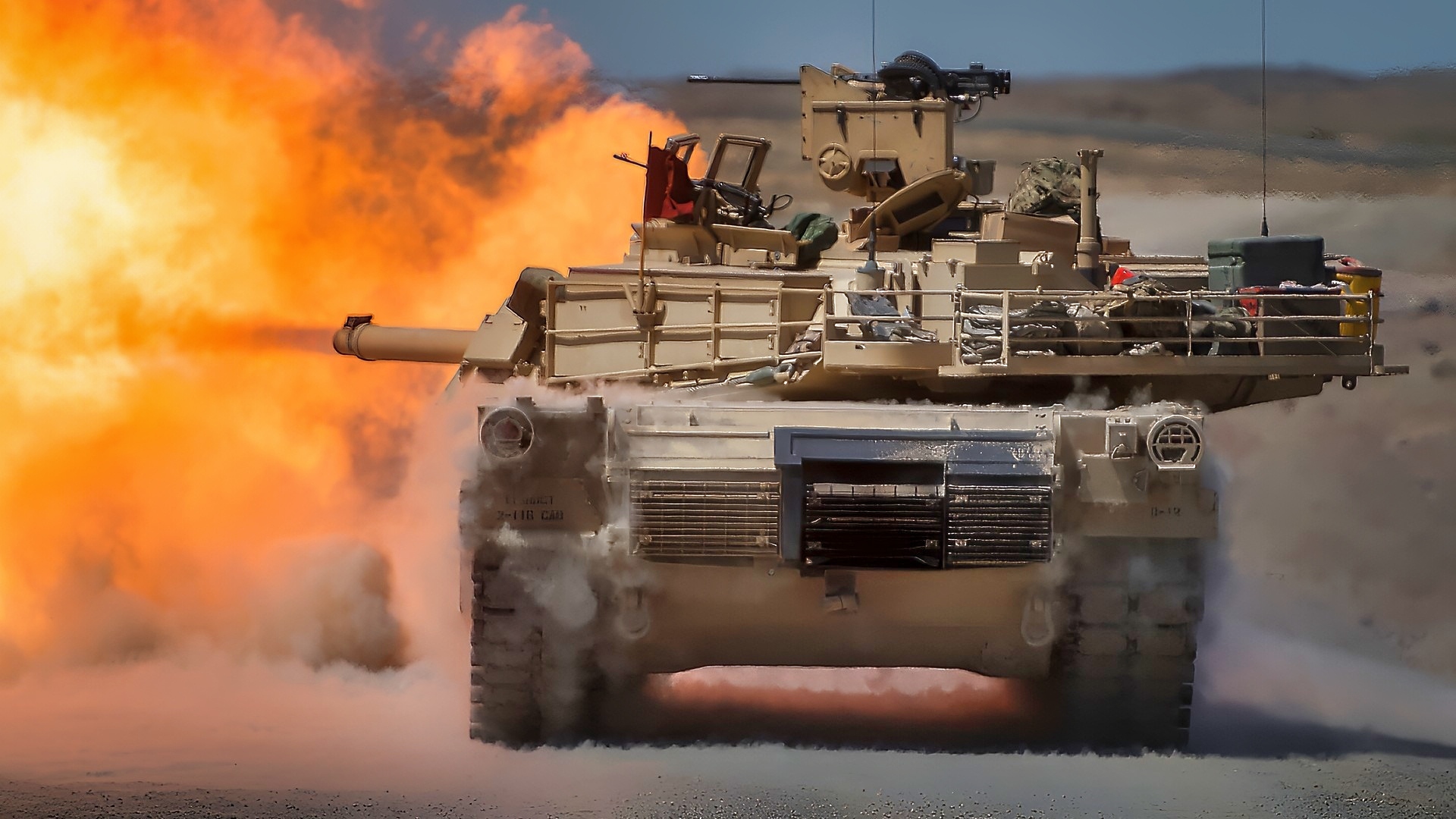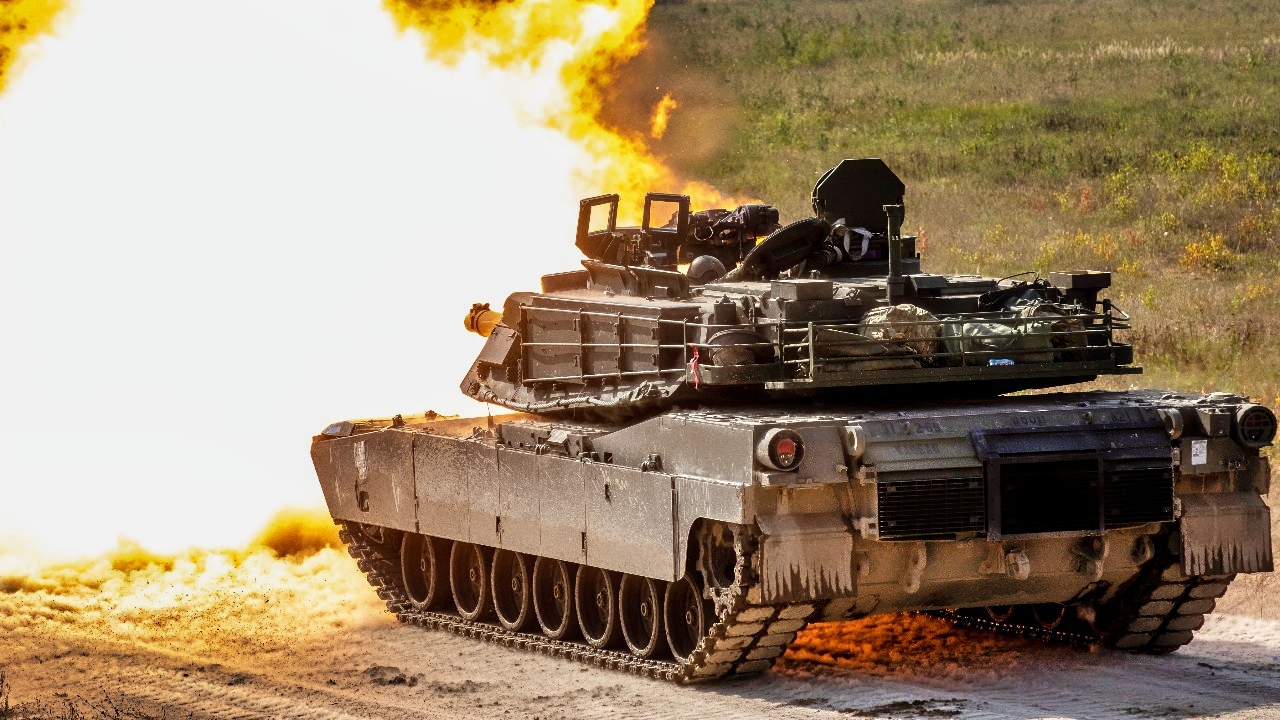Key Points and Summary – The U.S.-German MBT-70 “super tank” was canceled in the 1960s, its technological legacy endures in the modern M1 Abrams.
-The MBT-70’s most innovative feature was its XM150 cannon, a cutting-edge gun that pioneered various ammunition types, including High-Explosive Anti-Tank (HEAT), SABOT, and anti-personnel rounds.

M1 Abrams Tank Firing In Test Run. Image Credit: Creative Commons.
-These concepts were not lost; they evolved over the decades and served as the direct technological foundation for the Abrams’ diverse arsenal.
-This lineage culminates in the next-generation Advanced Multi-Purpose (AMP) round, a single “smart” projectile that fulfills the tactical vision first explored by the MBT-70.
The Surprising Legacy of the Doomed MBT-70
The ambitious, 1960s-era US-German MBT-70 tank was innovative and promising, yet short-lived, as it was canceled due to cost overruns and design challenges.
This made the tank somewhat at odds with itself, as it seemed to both raise hopes and expectations for future warfighting technologies while also suddenly vanishing into a mist of uncertainty.
However, as is often the case with these kinds of projects, some of its technologies outlived the platform, informing and inspiring subsequent weapons developments.
Ahead of its Time
The joint American-German MBT-70 tank incorporated a significant XM150, a long-barreled tank cannon considered extremely cutting-edge in its time, and a series of firepower-oriented technologies that arguably inspired many of the innovations now woven into the M1 Abrams tank.
Described as a longer-barreled variant of the XM-81 gun launcher, the XM-150 pioneered or established the technical basis for a range of rounds now fired by modern tanks, including High Explosive, anti-personnel, High Explosive Anti-Tank (HEAT) rounds, and armor-piercing rounds.
These kinds of explosives have been a mainstay for the Abrams tank for many years, and they arguably evolved from some of the breakthrough technologies introduced by the XM150.
Today’s Abrams is now rapidly developing what’s called an Advanced Multi-Purpose round, which, when connected with an ammunition data link and tank gunner, can adapt a single round to a range of explosives, blast effects, and energetics.

U.S. Army tank crews with Alpha “Animal” Company and Bravo “Barbarian” Company, 2nd Battalion, 69th Armor Regiment, 2nd Armored Brigade Combat Team, supporting 3rd Infantry Division, fire rounds from M1A2 Abrams tanks at Bemowo Piskie Training Area, Poland Sept. 12. The 3rd Infantry Division’s mission in Europe is to engage in multinational training and exercises across the continent, working alongside NATO allies and regional security partners to provide combat-credible forces to V Corps, America’s forward-deployed corps in Europe. (U.S. Army photo by Alex Soliday)
This next-generation round, which encompasses a range of attack possibilities built into a single round, evolved from existing HEAT, SABOT, and Armor-piercing rounds, weapons which have a clear lineage to the XM150.
Future AMP Round
The arrival of this type of rounds, and the explosives or “energetics” they employ, wound up reshaping tactics and battlefield maneuver formations into what could be called modern land warfare and Combined Arms Maneuver concepts.
Anti-personnel rounds, which have over the years been referred to as canister rounds, are designed to discharge with added fragmentation in order to disperse lethal effects across a given “area,” as opposed to a single or more narrowly configured explosion.
This enabled tank rounds, which were historically used to penetrate enemy tanks, buildings, and reinforced structures, to attack and destroy small groups of dismounted enemy fighters across a small area, creating the sought-after anti-personnel impact.
The MBT-70 In 1 Word: Historic
A Canister round, referred to as the M1028, could counter what weapons developers called a “human wave assault” by essentially scattering projectiles across an area.
This kind of tactical effect could be interpreted as a precursor to “air burst” rounds and other kinds of penetrating rounds and delayed fuses.
Armor-piercing fin-stabilized SABOT rounds appear to have also evolved from the XM150, as it could have arguably created a foundation from which modern SABOT rounds appear to have evolved.
There are also delayed fuses to enable a round to “penetrate” before detonating, as well as “point detonate” rounds capable of exploding on impact.

An M1A2 Abrams tanks, assigned to 1st Battalion, 16th Infantry Regiment, 1st Armored Brigade Combat Team, 1st Infantry Division, maneuver into fighting position during a battalion live-fire range during Agile Spirit 19 at Orpholo Training Area, Georgia, August 9, 2019. AgS19 is a joint, multinational exercise co-led by the Georgian Defense Forces and U.S. Army Europe which incorporates a command post exercise, field training and joint multinational live fires. (U.S. Army photo by Staff Sgt. True Thao)
In a 2016 Army statement on AMP, a senior program manager describes the Concept of Operation behind the AMP round by saying, “Right now our crews face the dilemma as they go into combat of deciding what rounds to load in the turret and carry in the gun.
If they choose wrong, they could have a mismatch between target and ammunition, which will cost them valuable seconds while in enemy contact.”
About the Author: Kris Osborn
Kris Osborn is the President of Warrior Maven – Center for Military Modernization. Osborn previously served at the Pentagon as a highly qualified expert in the Office of the Assistant Secretary of the Army—Acquisition, Logistics & Technology. Osborn has also worked as an anchor and on-air military specialist at national TV networks. He has appeared as a guest military expert on Fox News, MSNBC, The Military Channel, and The History Channel. He also has a Masters Degree in Comparative Literature from Columbia University.
More Military
Russia’s ‘Black Hole’ Kilo-Class Submarine Has a Message for the U.S. Navy
How a Russian Pilot Defected With A Mach 2 MiG-29 Fulcrum Fighter
The F-4 Phantom II Has a Message for Any Air Force on Earth
The F-16 Fighting Falcon Fighter Has a Message For Any Air Force on Earth










